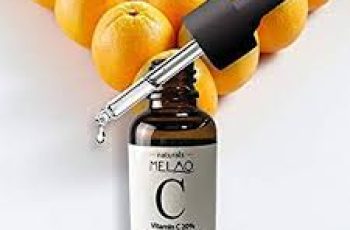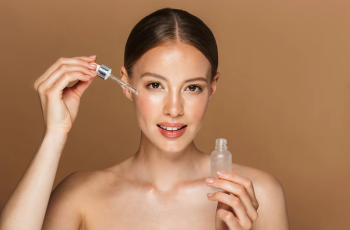.webp)
.webp)
.webp)
.webp)
Can You Use Retin-A and Hyaluronic Acid Together? What You Need to Know
.webp)
.webp)
Retin-A and hyaluronic acid are two of the most powerful skincare ingredients available. Both are backed by strong scientific research and deliver impressive results.
.webp)
.webp)
.webp)
Naturally, many wonder: can you use Retin-A and hyaluronic acid together? This post dives into that question and explains how these ingredients work for your skin.
.webp)
.webp)
What Is Hyaluronic Acid?
.webp)
.webp)
.webp)
Hyaluronic acid (HA) is a molecule naturally found in your body. It helps keep your skin, joints, and tissues hydrated and healthy.
.webp)
.webp)
In skincare, HA is usually sourced from sugar cane and added to various products.
.webp)
.webp)
.webp)
HA works by drawing moisture from the air and other skincare formulas and locking it into your skin.
.webp)
.webp)
This hydration strengthens the skin’s protective barrier and helps fight damage from free radicals like pollution and UV rays.
.webp)
.webp)
.webp)
Hyaluronic acid suits all skin types—even dry or sensitive skin.
.webp)
.webp)
It’s also one of the few ingredients that can safely be combined with almost any other active ingredient, making it an excellent hydration booster that calms irritation caused by stronger products.
.webp)
.webp)
.webp)
If you want to learn more about HA and its benefits, check out our dedicated blog post on the topic.
.webp)
.webp)
What Is Retin-A?
.webp)
.webp)
.webp)
Retin-A, also called tretinoin, is a potent form of vitamin A. It’s widely used to fight signs of aging and treat acne simultaneously.
.webp)
.webp)
Unlike common belief, Retin-A is not an exfoliant but accelerates the skin’s natural cell turnover.
.webp)
.webp)
.webp)
By speeding up this process, Retin-A helps shed dead skin cells and reveals fresh, glowing skin underneath.
.webp)
.webp)
It fights wrinkles and fine lines while stimulating collagen production deep in the skin, which boosts firmness and elasticity.
.webp)
.webp)
.webp)
Retin-A is a cornerstone in anti-aging skincare routines and acne treatments alike. For a deeper dive into Retin-A and its benefits, see our full blog post on The Beauty Insiders.
.webp)
.webp)
Can You Use Retinol Cream and Hyaluronic Acid Together?
.webp)
.webp)
.webp)
Yes! You can absolutely use hyaluronic acid and retinol (including Retin-A) together. Many skincare products combine both ingredients in a single formula, making it easy to enjoy their combined benefits.
.webp)
.webp)
If you prefer, you can also apply them separately. The typical approach is to apply Retin-A first, allowing it to absorb into the skin.
.webp)
.webp)
.webp)
Then, follow with hyaluronic acid to lock moisture into the skin and counteract the dryness and irritation often caused by vitamin A products.
.webp)
.webp)
This combo hydrates, soothes, and boosts Retin-A’s effectiveness, making your skin look radiant without feeling tight or flaky.
.webp)
.webp)
.webp)
What Goes On First: Hyaluronic Acid or Retin-A?
.webp)
.webp)
The answer depends on your product’s formulation and texture. A basic skincare rule is to apply products from thinnest to thickest consistency.
.webp)
.webp)
.webp)
Hyaluronic acid usually comes in serums or lightweight moisturizers, which are typically applied later in your routine. Retin-A often appears in creams or gels, which you might apply earlier.
.webp)
.webp)
Start with whichever product is thinner. For example, if your Retin-A is a thin cream and your HA is a thicker serum, apply Retin-A first. If HA is in a light serum and Retin-A is a heavy cream, apply HA first.
.webp)
.webp)
.webp)
To avoid irritation, always perform a patch test 24 hours before using new products on your face.
.webp)
.webp)
How Do Hyaluronic Acid and Retin-A Differ?
.webp)
.webp)
.webp)
Both are powerful but work differently. Think of hyaluronic acid as a big glass of water for your skin. It attracts moisture and locks it into the outer skin layers.
.webp)
.webp)
This keeps your skin barrier strong, protecting against sun damage, pollution, and aging.
.webp)
.webp)
.webp)
Retin-A, on the other hand, works beneath the surface. It speeds up skin cell renewal and boosts collagen, improving texture and firmness. While HA hydrates and soothes, Retin-A transforms and repairs.
.webp)
.webp)
Together, they hydrate, protect, and renew your skin for a healthier, more youthful look.
.webp)
.webp)
.webp)
Can Hyaluronic Acid Make Wrinkles Worse?
.webp)
.webp)
Generally, no. But you can have too much of a good thing. Applying excessive hyaluronic acid might pull water from the deeper skin layers if there’s not enough moisture in the air.
This can dry out your skin and make fine lines and wrinkles appear deeper and more visible over time.
If this happens, stop using HA for a few days to let your skin rebalance. When you reintroduce it, apply the correct amount—usually a pea-sized amount on damp skin—to keep your skin hydrated and plump.
How to Safely Combine Retin-A and Hyaluronic Acid
Start Slowly
If you’re new to Retin-A, begin by using it every other night to allow your skin to adjust. Use HA daily to maintain hydration.
Apply Retin-A First
After cleansing and drying your face, apply a thin layer of Retin-A. Let it absorb fully.
Follow with Hyaluronic Acid
Next, apply your hyaluronic acid serum on damp skin. This seals in moisture and soothes any Retin-A irritation.
Moisturize and Protect
Finish with a moisturizer suited to your skin type. In the morning, always apply sunscreen, as Retin-A increases sun sensitivity.
Additional Tips to Maximize Benefits
Avoid harsh cleansers or exfoliants when using Retin-A and HA together to prevent over-drying.
Stay consistent but listen to your skin. If irritation occurs, reduce Retin-A frequency and increase moisturizing.
Consider consulting a dermatologist to customize your routine for your skin’s needs.
Why This Combo Works So Well
Retin-A renews and repairs the skin, but it can cause dryness and peeling. Hyaluronic acid hydrates and calms, offsetting Retin-A’s drying effects. Together, they balance skin renewal and moisture retention.
This combination results in skin that looks brighter, firmer, and more youthful—without the common downsides of Retin-A alone.
Final Thoughts
You can confidently use Retin-A and hyaluronic acid together to maximize your skincare results. Just remember to patch test, apply in the correct order, and keep your skin hydrated and protected.
If you want to learn more about layering skincare ingredients or have questions about your routine, follow us on Instagram. I’m always happy to help in the DMs!
Would you like me to help you create a customized routine combining these ingredients? Just ask!
This expanded guide ensures you have everything you need to know about safely and effectively pairing Retin-A and hyaluronic acid in your skincare routine.

.webp)
.webp)
.webp)
.webp) Can You Use Retin-A and Hyaluronic Acid Together? What You Need to Know
Can You Use Retin-A and Hyaluronic Acid Together? What You Need to Know
.webp)
.webp) Retin-A and hyaluronic acid are two of the most powerful skincare ingredients available. Both are backed by strong scientific research and deliver impressive results.
Retin-A and hyaluronic acid are two of the most powerful skincare ingredients available. Both are backed by strong scientific research and deliver impressive results.
.webp)
.webp)
.webp) Naturally, many wonder: can you use Retin-A and hyaluronic acid together? This post dives into that question and explains how these ingredients work for your skin.
Naturally, many wonder: can you use Retin-A and hyaluronic acid together? This post dives into that question and explains how these ingredients work for your skin.
.webp)
.webp) What Is Hyaluronic Acid?
What Is Hyaluronic Acid?
.webp)
.webp)
.webp) Hyaluronic acid (HA) is a molecule naturally found in your body. It helps keep your skin, joints, and tissues hydrated and healthy.
Hyaluronic acid (HA) is a molecule naturally found in your body. It helps keep your skin, joints, and tissues hydrated and healthy.
.webp)
.webp) In skincare, HA is usually sourced from sugar cane and added to various products.
In skincare, HA is usually sourced from sugar cane and added to various products.
.webp)
.webp)
.webp) HA works by drawing moisture from the air and other skincare formulas and locking it into your skin.
HA works by drawing moisture from the air and other skincare formulas and locking it into your skin.
.webp)
.webp) This hydration strengthens the skin’s protective barrier and helps fight damage from free radicals like pollution and UV rays.
This hydration strengthens the skin’s protective barrier and helps fight damage from free radicals like pollution and UV rays.
.webp)
.webp)
.webp) Hyaluronic acid suits all skin types—even dry or sensitive skin.
Hyaluronic acid suits all skin types—even dry or sensitive skin.
.webp)
.webp) It’s also one of the few ingredients that can safely be combined with almost any other active ingredient, making it an excellent hydration booster that calms irritation caused by stronger products.
It’s also one of the few ingredients that can safely be combined with almost any other active ingredient, making it an excellent hydration booster that calms irritation caused by stronger products.
.webp)
.webp)
.webp) If you want to learn more about HA and its benefits, check out our dedicated blog post on the topic.
If you want to learn more about HA and its benefits, check out our dedicated blog post on the topic.
.webp)
.webp) What Is Retin-A?
What Is Retin-A?
.webp)
.webp)
.webp) Retin-A, also called tretinoin, is a potent form of vitamin A. It’s widely used to fight signs of aging and treat acne simultaneously.
Retin-A, also called tretinoin, is a potent form of vitamin A. It’s widely used to fight signs of aging and treat acne simultaneously.
.webp)
.webp) Unlike common belief, Retin-A is not an exfoliant but accelerates the skin’s natural cell turnover.
Unlike common belief, Retin-A is not an exfoliant but accelerates the skin’s natural cell turnover.
.webp)
.webp)
.webp) By speeding up this process, Retin-A helps shed dead skin cells and reveals fresh, glowing skin underneath.
By speeding up this process, Retin-A helps shed dead skin cells and reveals fresh, glowing skin underneath.
.webp)
.webp) It fights wrinkles and fine lines while stimulating collagen production deep in the skin, which boosts firmness and elasticity.
It fights wrinkles and fine lines while stimulating collagen production deep in the skin, which boosts firmness and elasticity.
.webp)
.webp)
.webp) Retin-A is a cornerstone in anti-aging skincare routines and acne treatments alike. For a deeper dive into Retin-A and its benefits, see our full blog post on The Beauty Insiders.
Retin-A is a cornerstone in anti-aging skincare routines and acne treatments alike. For a deeper dive into Retin-A and its benefits, see our full blog post on The Beauty Insiders.
.webp)
.webp) Can You Use Retinol Cream and Hyaluronic Acid Together?
Can You Use Retinol Cream and Hyaluronic Acid Together?
.webp)
.webp)
.webp) Yes! You can absolutely use hyaluronic acid and retinol (including Retin-A) together. Many skincare products combine both ingredients in a single formula, making it easy to enjoy their combined benefits.
Yes! You can absolutely use hyaluronic acid and retinol (including Retin-A) together. Many skincare products combine both ingredients in a single formula, making it easy to enjoy their combined benefits.
.webp)
.webp) If you prefer, you can also apply them separately. The typical approach is to apply Retin-A first, allowing it to absorb into the skin.
If you prefer, you can also apply them separately. The typical approach is to apply Retin-A first, allowing it to absorb into the skin.
.webp)
.webp)
.webp) Then, follow with hyaluronic acid to lock moisture into the skin and counteract the dryness and irritation often caused by vitamin A products.
Then, follow with hyaluronic acid to lock moisture into the skin and counteract the dryness and irritation often caused by vitamin A products.
.webp)
.webp) This combo hydrates, soothes, and boosts Retin-A’s effectiveness, making your skin look radiant without feeling tight or flaky.
This combo hydrates, soothes, and boosts Retin-A’s effectiveness, making your skin look radiant without feeling tight or flaky.
.webp)
.webp)
.webp) What Goes On First: Hyaluronic Acid or Retin-A?
What Goes On First: Hyaluronic Acid or Retin-A?
.webp)
.webp) The answer depends on your product’s formulation and texture. A basic skincare rule is to apply products from thinnest to thickest consistency.
The answer depends on your product’s formulation and texture. A basic skincare rule is to apply products from thinnest to thickest consistency.
.webp)
.webp)
.webp) Hyaluronic acid usually comes in serums or lightweight moisturizers, which are typically applied later in your routine. Retin-A often appears in creams or gels, which you might apply earlier.
Hyaluronic acid usually comes in serums or lightweight moisturizers, which are typically applied later in your routine. Retin-A often appears in creams or gels, which you might apply earlier.
.webp)
.webp) Start with whichever product is thinner. For example, if your Retin-A is a thin cream and your HA is a thicker serum, apply Retin-A first. If HA is in a light serum and Retin-A is a heavy cream, apply HA first.
Start with whichever product is thinner. For example, if your Retin-A is a thin cream and your HA is a thicker serum, apply Retin-A first. If HA is in a light serum and Retin-A is a heavy cream, apply HA first.
.webp)
.webp)
.webp) To avoid irritation, always perform a patch test 24 hours before using new products on your face.
To avoid irritation, always perform a patch test 24 hours before using new products on your face.
.webp)
.webp) How Do Hyaluronic Acid and Retin-A Differ?
How Do Hyaluronic Acid and Retin-A Differ?
.webp)
.webp)
.webp) Both are powerful but work differently. Think of hyaluronic acid as a big glass of water for your skin. It attracts moisture and locks it into the outer skin layers.
Both are powerful but work differently. Think of hyaluronic acid as a big glass of water for your skin. It attracts moisture and locks it into the outer skin layers.
.webp)
.webp) This keeps your skin barrier strong, protecting against sun damage, pollution, and aging.
This keeps your skin barrier strong, protecting against sun damage, pollution, and aging.
.webp)
.webp)
.webp) Retin-A, on the other hand, works beneath the surface. It speeds up skin cell renewal and boosts collagen, improving texture and firmness. While HA hydrates and soothes, Retin-A transforms and repairs.
Retin-A, on the other hand, works beneath the surface. It speeds up skin cell renewal and boosts collagen, improving texture and firmness. While HA hydrates and soothes, Retin-A transforms and repairs.
.webp)
.webp) Together, they hydrate, protect, and renew your skin for a healthier, more youthful look.
Together, they hydrate, protect, and renew your skin for a healthier, more youthful look.
.webp)
.webp)
.webp) Can Hyaluronic Acid Make Wrinkles Worse?
Can Hyaluronic Acid Make Wrinkles Worse?
.webp)
.webp) Generally, no. But you can have too much of a good thing. Applying excessive hyaluronic acid might pull water from the deeper skin layers if there’s not enough moisture in the air.
This can dry out your skin and make fine lines and wrinkles appear deeper and more visible over time.
If this happens, stop using HA for a few days to let your skin rebalance. When you reintroduce it, apply the correct amount—usually a pea-sized amount on damp skin—to keep your skin hydrated and plump.
How to Safely Combine Retin-A and Hyaluronic Acid
Start Slowly
If you’re new to Retin-A, begin by using it every other night to allow your skin to adjust. Use HA daily to maintain hydration.
Apply Retin-A First
After cleansing and drying your face, apply a thin layer of Retin-A. Let it absorb fully.
Follow with Hyaluronic Acid
Next, apply your hyaluronic acid serum on damp skin. This seals in moisture and soothes any Retin-A irritation.
Moisturize and Protect
Finish with a moisturizer suited to your skin type. In the morning, always apply sunscreen, as Retin-A increases sun sensitivity.
Additional Tips to Maximize Benefits
Avoid harsh cleansers or exfoliants when using Retin-A and HA together to prevent over-drying.
Stay consistent but listen to your skin. If irritation occurs, reduce Retin-A frequency and increase moisturizing.
Consider consulting a dermatologist to customize your routine for your skin’s needs.
Why This Combo Works So Well
Retin-A renews and repairs the skin, but it can cause dryness and peeling. Hyaluronic acid hydrates and calms, offsetting Retin-A’s drying effects. Together, they balance skin renewal and moisture retention.
This combination results in skin that looks brighter, firmer, and more youthful—without the common downsides of Retin-A alone.
Final Thoughts
You can confidently use Retin-A and hyaluronic acid together to maximize your skincare results. Just remember to patch test, apply in the correct order, and keep your skin hydrated and protected.
If you want to learn more about layering skincare ingredients or have questions about your routine, follow us on Instagram. I’m always happy to help in the DMs!
Would you like me to help you create a customized routine combining these ingredients? Just ask!
This expanded guide ensures you have everything you need to know about safely and effectively pairing Retin-A and hyaluronic acid in your skincare routine.
Generally, no. But you can have too much of a good thing. Applying excessive hyaluronic acid might pull water from the deeper skin layers if there’s not enough moisture in the air.
This can dry out your skin and make fine lines and wrinkles appear deeper and more visible over time.
If this happens, stop using HA for a few days to let your skin rebalance. When you reintroduce it, apply the correct amount—usually a pea-sized amount on damp skin—to keep your skin hydrated and plump.
How to Safely Combine Retin-A and Hyaluronic Acid
Start Slowly
If you’re new to Retin-A, begin by using it every other night to allow your skin to adjust. Use HA daily to maintain hydration.
Apply Retin-A First
After cleansing and drying your face, apply a thin layer of Retin-A. Let it absorb fully.
Follow with Hyaluronic Acid
Next, apply your hyaluronic acid serum on damp skin. This seals in moisture and soothes any Retin-A irritation.
Moisturize and Protect
Finish with a moisturizer suited to your skin type. In the morning, always apply sunscreen, as Retin-A increases sun sensitivity.
Additional Tips to Maximize Benefits
Avoid harsh cleansers or exfoliants when using Retin-A and HA together to prevent over-drying.
Stay consistent but listen to your skin. If irritation occurs, reduce Retin-A frequency and increase moisturizing.
Consider consulting a dermatologist to customize your routine for your skin’s needs.
Why This Combo Works So Well
Retin-A renews and repairs the skin, but it can cause dryness and peeling. Hyaluronic acid hydrates and calms, offsetting Retin-A’s drying effects. Together, they balance skin renewal and moisture retention.
This combination results in skin that looks brighter, firmer, and more youthful—without the common downsides of Retin-A alone.
Final Thoughts
You can confidently use Retin-A and hyaluronic acid together to maximize your skincare results. Just remember to patch test, apply in the correct order, and keep your skin hydrated and protected.
If you want to learn more about layering skincare ingredients or have questions about your routine, follow us on Instagram. I’m always happy to help in the DMs!
Would you like me to help you create a customized routine combining these ingredients? Just ask!
This expanded guide ensures you have everything you need to know about safely and effectively pairing Retin-A and hyaluronic acid in your skincare routine.



